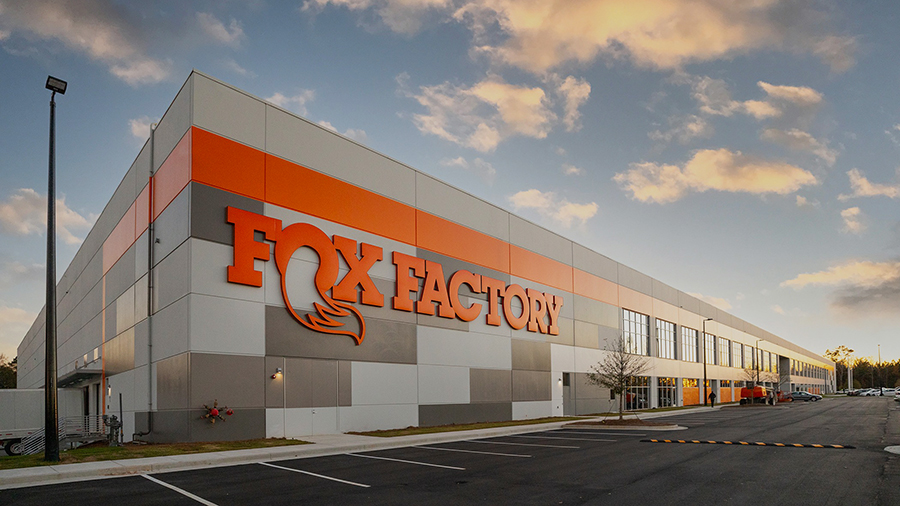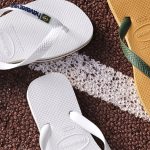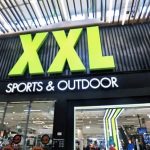Fox Factory Holding Corp. reported that sales for the first quarter of fiscal 2023 were $399.9 million, an increase of 5.8 percent compared to sales of $378.0 million in the Q1 fiscal 2022. The increase reflects a 35.0 percent increase in Powered Vehicles Group (PVG) sales and a 30.0 percent decrease in Specialty Sports Group (SSG) sales. In addition, Fox closed its Custom Wheel House acquisition on March 3, contributing $6.9 million to the top line for the quarter.
The Specialty Sports Group delivered quarterly revenue of $118.9 million, a decrease that the company said was primarily due to the stronger-than-anticipated seasonality impact in Q1 of 2023. On a conference call with analysts, company CEO Mike Dennison noted that the fourth quarter of 2022 did not reflect the expected seasonality impact, which made Q1 of 2023 even more dramatic. In addition, he said the company continues to see the larger-than-anticipated inventory glut foreshadowing a more extended period of decline before returning to a more normal environment.
Dennison said Fox’s Specialty Sports Group expects to be down over 20 percent for the full year, with the worst impact in the second quarter.
“Our team is keeping a finger on the pulse of the market, and we will continue to update you every quarter as we work our way through the channel inventory challenges,” Dennison shared. “Once accomplished, we feel confident equilibrium and the bike industry will return to normal as we continue to see positive signs with end customer demand.”
The issues within the SSG business will also impact employees who work in that segment.
“As we managed through all of these economic and market changes, our top priority is to ensure the long-term sustainable growth of our business,” Dennison explained. “To achieve this, it was important to recognize the shifting requirements for workforce utilization and alignment. On this front, we instituted cost reductions, which primarily resulted in a reduction of the workforce within our Specialty Sports Group.”
In answer to an analyst’s question, Dennison shared that the inventory overhang issue is pretty balanced between North America and Europe.
“Frankly, depending on the month and the timeframe, North America versus Europe can be a little bit different,” he explained. And we are seeing kind of puts and takes on that. But both of them are really kind of, again, not a demand issue as much as just a build-up of supply in the system. So, we believe that that’s going to continue throughout Q2 in both regions. And it’s hard to pick which region will actually come out ahead. And I think that might be tied somewhat to the macroeconomic environment in those two regions as well, so, kind of hard to call the ball on that.”
Dennison continued to say they are all fed from the same supply chain.
“It’s a function of getting the supply chain itself back in equilibrium,” he continued. “But I would expect to see U.S. and Europe trend in a similar path.”
When asked about the e-bike business, Dennison said the category is a “strong part of our business.”
“As you know, we have been growing our partner business quite substantially,” he said. Unfortunately, it was one of the biggest parts of the supply chain glut because of the things that we couldn’t get to complete, and our OEM partners couldn’t get to complete bikes with motors. So, that was a large part of what was stuck in the channel. And so we are seeing that as kind of a secondary effect of this issue. I think as we come out of this, e-bike would be – it will be on fire.”
The CEO said e-bike demand continues to grow faster than pedal bike demand across every region, especially in Europe.
Dennison said that smaller, more nimble OEMs had responded better to the e-bike needs and had less inventory in the system.
“We pivoted left to right for it to get on to model year ’24 faster than some of the bigger OEM partners,” he explained. “Now, there is good news and bad news. The good news is that we have really good relationships with those smaller boutique OEMs that are helping us get the model year 2024 more quickly. That means a lot of volume is tied up in the bigger guys and the bigger OEMs, and they are struggling. So, you will see that they need to sell through that model year 2023 before they launched inventory of model year 2024. As you can imagine, if they are pushing model year 2023 bikes still into dealers, it’s kind of hard to convince dealers to take model year 2024 bikes or vice versa. If you take the model year 2024, you have to discount model year 2023 even greater.”
He said the larger OEMs took a little while in Q1 to figure out the level of the issue. And now Q2, they are getting very aggressive about how to resolve it.
“The good news is they have gotten serious, and they know, I think, they certainly know exactly what they need to go do. I think Q2 is going to play out finding out what that looks like, which is, again, why we are being a bit conservative in the back half of the year, so you can see it on that side,” he said.
Dennison said the inventory issue in the market is a bigger issue with the OEMs than it is with retailers.
“I think it’s still the inventory that’s half-built in the supply chain,” Dennison explained. “Now, eventually, that has to roll through. Obviously, dealers and distributors get to the end market. So, at some point, that paid go all the way through the snake, so to speak. And so you are going to see it end up in dealers, but that’s going to be a bit of a process. So, the faster they can get that done, by the way, the better off we are all going to be. We would like to see that inventory move into the dealer’s hands in Q2, and whatever discounting they do, which doesn’t really affect us, but needs to get done to get those bikes move, the more aggressive line they take on that course, the better off we are going to be. So, I would like to see these bikes get moved through, and they are starting to. But I don’t, again, think what we are going to see is do end customers wait for the model year 2024, or do they take a deal on the model year 2023, choosing to tell on that one.”
While the bike business is experiencing inventory issues, Dennison responded to another question about potential M&A activity now that the business slowed.
“It does create M&A opportunities because what we found through COVID and a spike in that business was valuations got significantly higher and kind of really out of the range that we were willing to pay,” Dennison said. “They are pulling back in the range, and we are looking at some very interesting – as a matter of fact, we picked up a small company even in the quarter that will be a good fit for our bike business. So, we are going to continue to be acquisitive in the SSG space. And finally, I think we are in a place where we can actually do some good work there without paying crazy in multiples.”
Fox posted quarterly revenue of $281 million in the Powered Vehicles Group, a fifth consecutive record revenue quarter for the Group. The increase in sales was said to be primarily due to increased demand in the OEM channel and strong performance in upfitting product lines.
“We are also in the process of rolling out an enhancement to our organizational structure, which is designed to be more aligned with our end customers and drive additional focus on product development,” Dennison said. “Our plan includes bifurcating our existing Powered Vehicles Group into two new product groups that better align our go-to-market strategies and product synergies. These two product groups would consist of our PVG legacy suspension business and, secondly, our portfolio of non-suspension aftermarket applications in upfitting.”
Dennison spoke about the previously discussed potential for margin improvement in PVG of 250 basis points to 350 basis points based on the ramp of Gainesville.
“I am thrilled to report that we saw much of that improvement achieved in the first quarter,” Dennison shared. “I’m more thrilled to report that we are not done. As our volume continues to grow in PVG, we believe we have another 200 basis points to 300 basis points of improvement ahead of us. While this will not be linear margin expansion and will be tied to volume increases, we clearly have a line of sight over the next 12-to-18 months to keep improving.”
For the full year, Fox expects Custom Wheel House to contribute revenue of approximately $60 million to $70 million, with the margin profile being accretive to Fox’s overall margin profile. The significant change in the revenue mix will continue to negatively impact margins. Still, Dennison said he is very confident they will offset some of that headwind through the integration of Custom Wheel House.
Gross margin was 33.3 percent of sales in the first quarter, a 150 basis point increase from gross margin of 31.8 percent in the first quarter of fiscal 2022. Non-GAAP adjusted gross margin increased 180 basis points to 34.1 percent from the year-ago period, excluding the effects of strategic transformation costs and the amortization of an acquired inventory valuation markup. The increase in gross margin was primarily driven by lower materials and other related costs, increased efficiencies at the company’s North American facilities and strong performance in upfitting product lines. In addition, the non-GAAP adjusted gross margin was favorably impacted by the step-up in inventory value as part of the purchase price accounting for Custom Wheel House.
Total operating expenses were $78.6 million for the first quarter, compared to $66.1 million in the first quarter of fiscal 2022. Operating expenses increased by $12.5 million primarily due to higher employee headcount and benefit-related costs, higher legal and professional fees, and higher insurance and facility-related expenses, partially offset by lower acquisition-related compensation and various others. As a percentage of sales, operating expenses for the first quarter of fiscal 2023 were 19.7 percent, compared to 17.5 percent in the first quarter of fiscal 2022. Non-GAAP operating expenses were $70.3 million, or 17.6 percent of sales in the first quarter of fiscal 2023, compared to $59.6 million, or 15.8 percent of sales, in the first quarter last year.
The company’s effective tax rate was 18.3 percent in the first quarter of fiscal 2023, compared to 4.8 percent in the first quarter of fiscal 2022. The change in the effective tax rate was primarily due to the release of the company’s valuation allowance against foreign tax credit carry-forwards in the first quarter of fiscal 2022 upon enactment of U.S. tax regulations, partially offset by a decrease in foreign withholding taxes, net of foreign tax credits in the first quarter of fiscal 2023.
Net income in the first quarter was $41.8 million, compared to $48.1 million in the year-ago quarter. Earnings per diluted share for the quarter were 98 cents a share, compared to earnings per diluted share of $1.13 for the first quarter of fiscal 2022.
For the second quarter of 2023, Fox expects sales in the range of $390 million to $410 million and non-GAAP adjusted earnings per diluted share in the range of $1.00 to $1.20 a share. For the fiscal year 2023, the company expects sales in the range of $1.67 billion to $1.70 billion and non-GAAP adjusted earnings per diluted share in the range of $5.00 to $5.30 a share. The full-year guidance assumes an income tax rate in the range of 15 percent to 18 percent.
Interim company CFO Maggie Torre said on the call that the company remains cautious in its outlook for the Specialty Sports Group in the second quarter. “Additionally, we anticipate continued revenue mix normalization in our Powered Vehicles Group throughout the year, driven by a higher percentage mix of OEM sales. As our understanding of the global business environment evolves, we plan to provide incremental updates each quarter regarding our expectations for 2023,” she shared.”
Photo courtesy Fox Factory
















